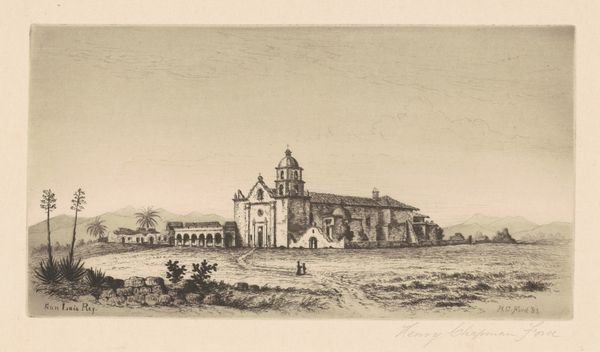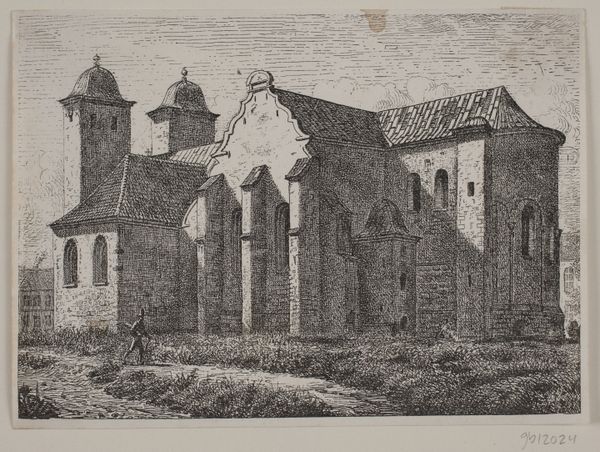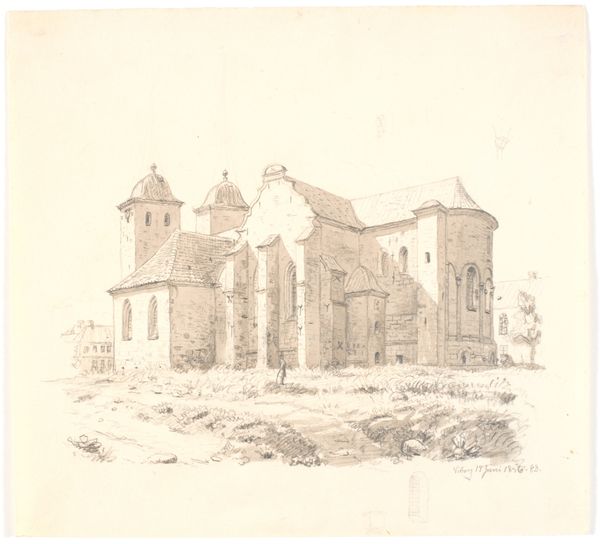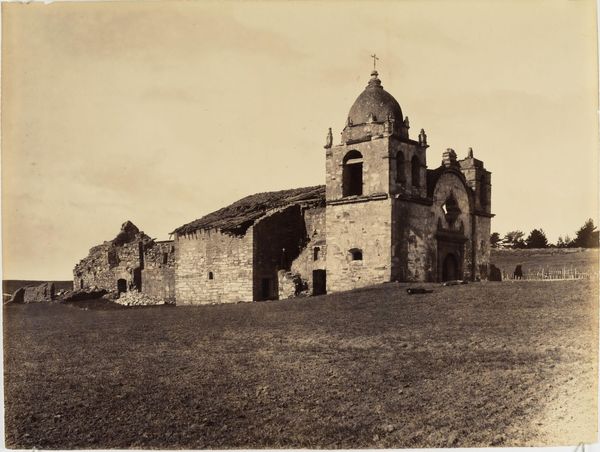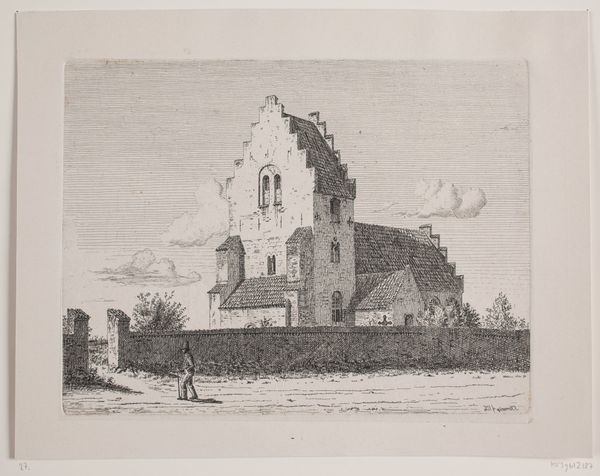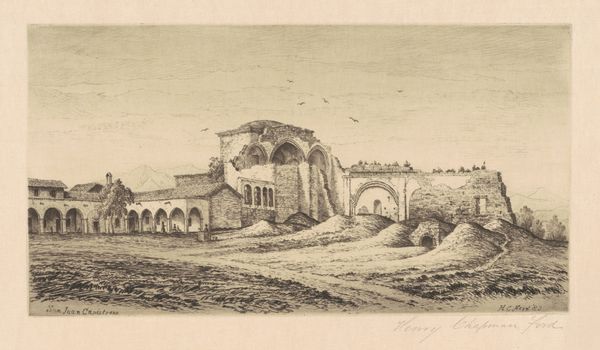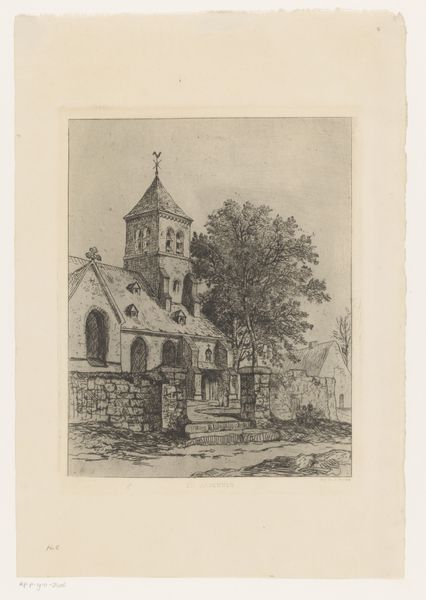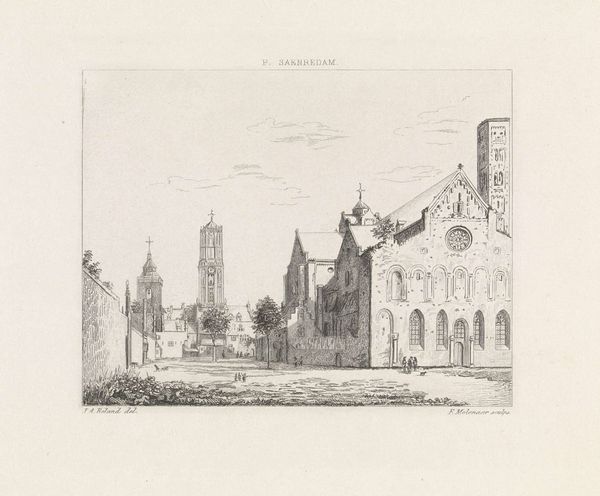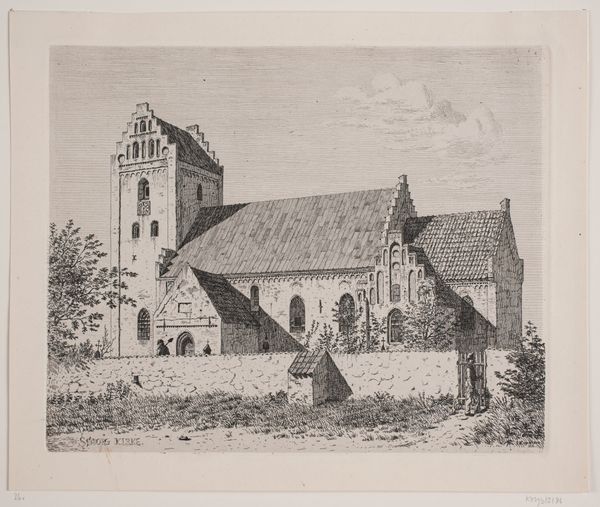
drawing, print, graphite
#
drawing
# print
#
landscape
#
graphite
#
academic-art
Dimensions: plate: 17.62 × 32.39 cm (6 15/16 × 12 3/4 in.) sheet: 32.54 × 44.61 cm (12 13/16 × 17 9/16 in.)
Copyright: National Gallery of Art: CC0 1.0
Curator: This graphite drawing from 1883, titled "Mission San Carlos Borromeo", is by Henry Chapman Ford. It is both a print and a drawing, displaying Ford's artistic range. Editor: It has such a melancholic atmosphere. The subdued graphite on what appears to be paper, lends it this incredible sense of aged dignity… Like looking at an old photograph tinged with the past, even somber. Curator: I would agree. The missions are deeply embedded in California's narrative. But that narrative isn’t simple. Here, Ford's mission isn't just a church, but a cultural cornerstone burdened by history. Look at the contrast, the serene architectural mass with its surroundings implying wilderness and the modest livestock nearby suggesting labor. Editor: Yes, there's this visual push and pull. It feels very deliberate, doesn't it? The meticulous rendering of the mission stands out against the much looser background. And what about those small dark huts, which symbolize home and rurality! The drawing thus presents an idea about culture clash or juxtaposition, how one culture or community overlaps another. Curator: Exactly. The Mission's architectural style has always represented a nexus of faith, colonialism, and forced labor. Ford's choice to portray the mission amidst humble surroundings can certainly be viewed as a social commentary, acknowledging indigenous presence and agricultural practice—both existing and changed. I might add that his depiction occurred during a period of heightened debate around Indigenous rights. Editor: Interesting that you should point this out! Knowing this drawing was produced at the tail end of the 19th century and how photographic imagery, as well as illustrated newspapers and periodicals at that time documented building across the American landscape for political gains, the placement and imagery takes on an increased level of meaning. So it presents an idea about America then. Curator: It definitely adds layers of consideration. I think we see something really powerful about these missions when they’re looked at anew and reassessed in our contemporary landscape. I agree that the medium lends itself to this mood, not overly stylized to make any grand historical claims, but as a simple reflection upon our shared past and maybe what lies ahead. Editor: Indeed. This wasn't simply a depiction; it's a piece that subtly compels us to look back at these important architectures while reevaluating history. And it feels ever present.
Comments
No comments
Be the first to comment and join the conversation on the ultimate creative platform.
